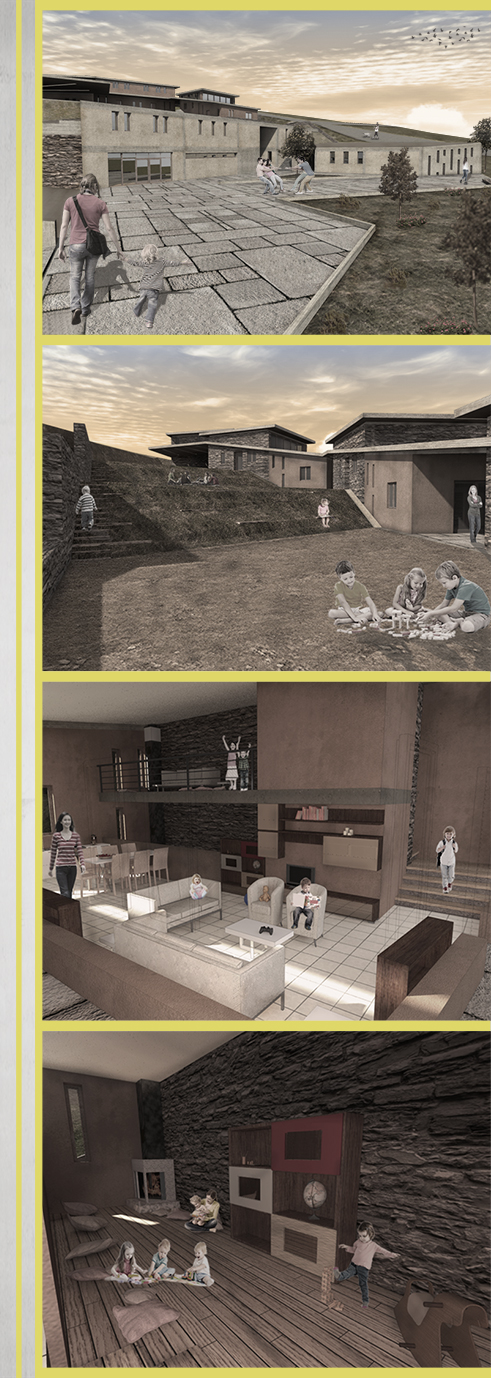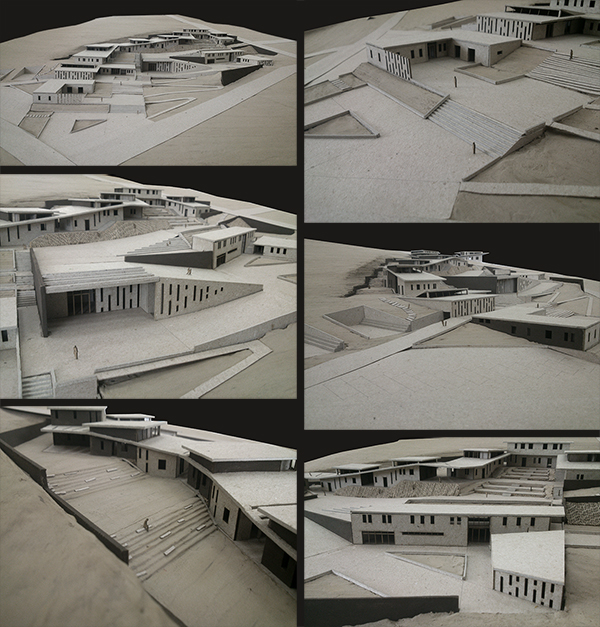STUDENTS PROJECTS
PROJECTS2013
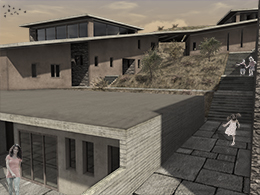
09 October, 2014
SOS Children’s Village in Amfithea Ioannina
The aim of the thesis is to design homes for children who are alone and in need of care, through the institution of SOS Children's Villages operating in Greece.
Students: Arampatzoglou Anastasia, Tsingistra Catherine
Supervisor: Mantzou Polyxeni, Patrick George, Nicholas Thomas
Democritus University of Thrace
Date: July 2014
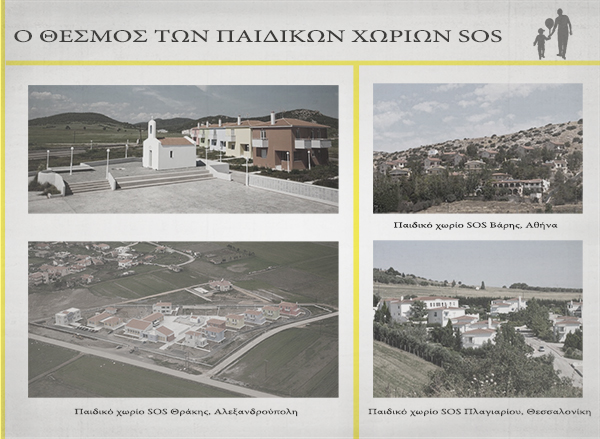
SOS Children's Villages was founded in 1949 by Herman Gmeiner, Austria. They are providing care and protection to children who are removed from their natural family environment. Unlike the old orphanage, SOS Children's Villages are representing the family model and help children to become better integrated into society. The child there belongs to a family, learns values, share responsibilities, develop long-term relationships and grows with love and acceptance, respectfully and safely.
Their operation is based on volunteerism and donations which are the largest part of their operation. Mother is the key member of these villages, which fills the great emotional and psychic emptiness that feels an abandoned child. Apart from the mother, an important role is also played by aunts and teachers. The aunt has her own house in the village and comes to replace the mother of a family where the mother is missing. Teachers are only men and come to replace the male model of the father of a family. They spend constructive time with children, playing with them and accompanying them in any extracurricular activity.
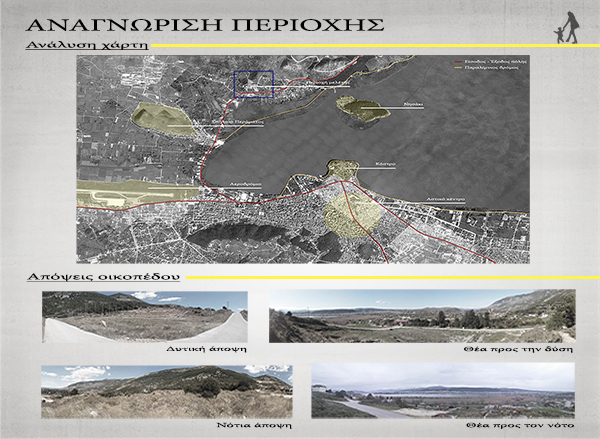
In Greece the first SOS Children's Village was founded in 1975, and to date there are three such villages placed in Athens, Thessaloniki and Alexandroupoli. In 2009 there was a proposal to offer an old institution in Ioannina, the Paidopoli "Saint Helena", to create a new children's village but the plans were abandoned. For this reason we chose to look for a site at Ioannina to place our own proposal for a SOS Children's Village.
The site is in Amfithea Ioannina, 5 km away from the city center. The village has about 570 inhabitants has a primary school and a kindergarten. Located on the outskirts of the village is on a hill with enough gradient, overlooks the lake and the city of Ioannina and the area is about 17 acres. In our proposal apart from hosting the children, we added spaces which can be used by people who do not live in the SOS village, so that it can be better integrated and assimilated into society.
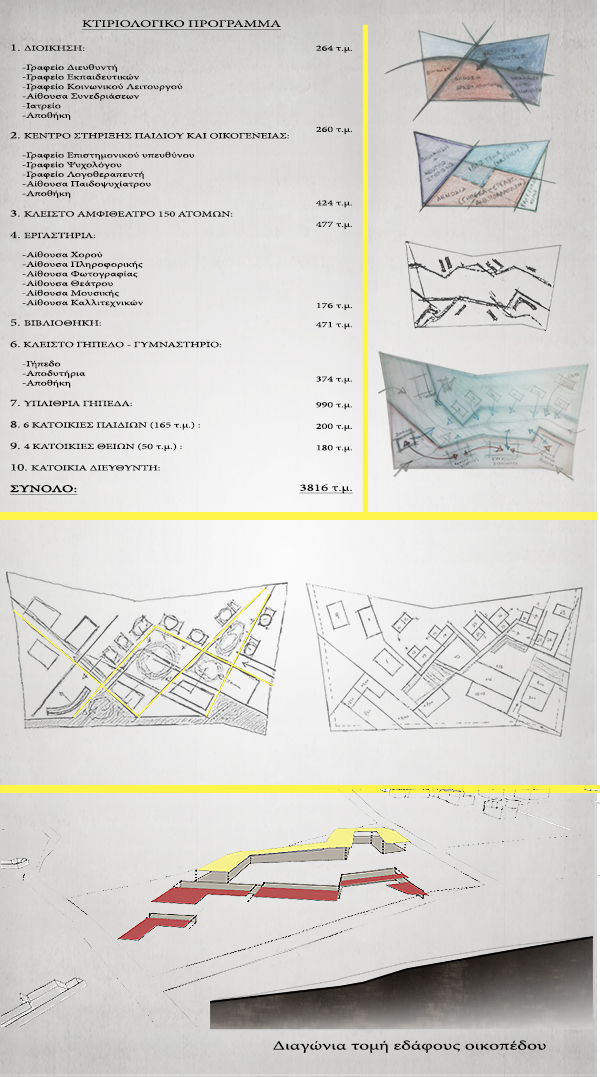
In our proposal ground played a big role, because of the large height differences in the site. This sharp elevation was our main difficulty we had to face, so that there are not big differences in height between the buildings and the transition from one to another is quick and easy.
Having as a basis the villages of Zagori, which also includes the study area, we created two types of buildings. The first type is that of public buildings, in the lower levels of the site, which at least one side is buried in the ground to receive the elevation differences and make the climb seem softer. As a result, the roof in some cases is used as an extension of the squares. The second type is that of housing, in the upper levels of the site, which is sitting on the floor and the roof gives the suspicion that hovers. With that tactic we were able to visually distinguish our operations but also achieve the best view of all the buildings.
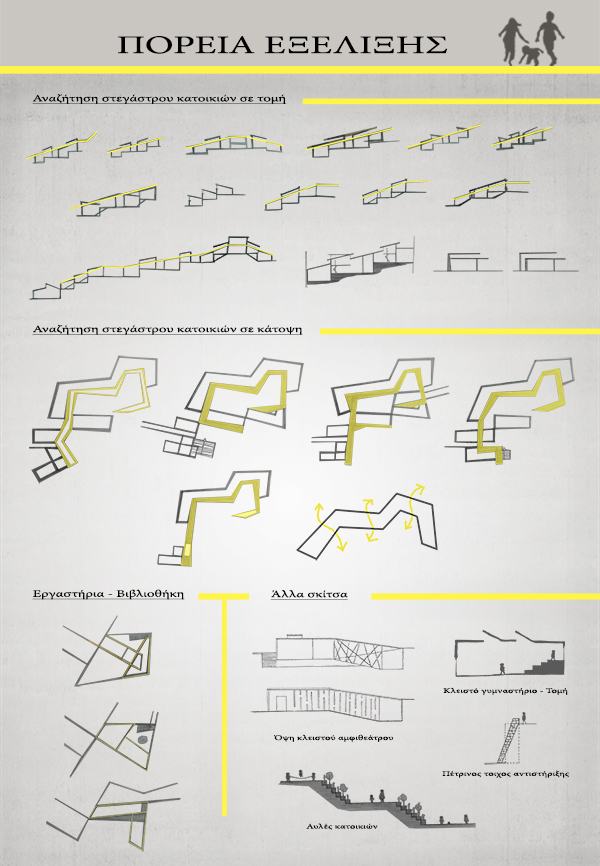
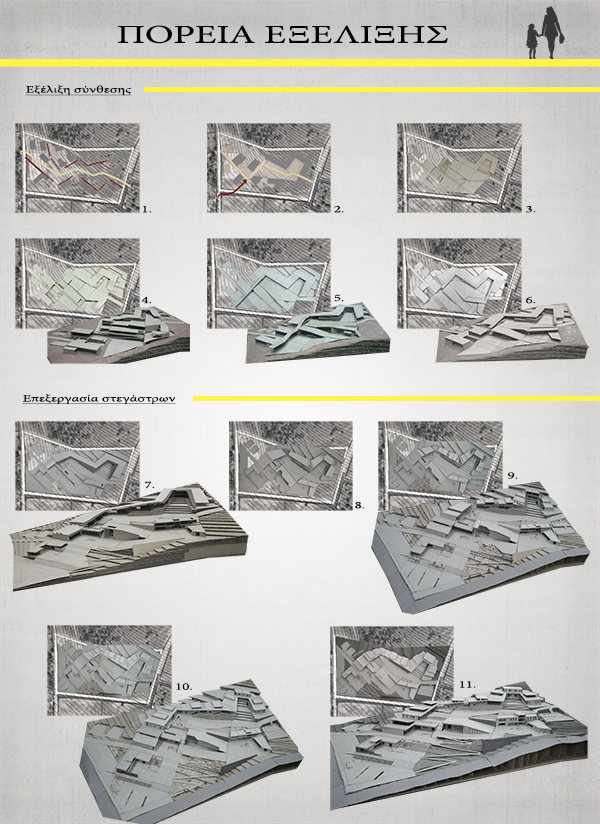
The entrance area is very important. The transition from the outside to the inside environment should be smooth and perceived by the guest or tenant. The entrance to the complex is made by stairs. A shallow ramp allows people with disabilities to enter the complex, but is also a secondary way for children who want to run and play.
The first buildings that we find are the public buildings, so that the access to them can be direct by people who do not live in the SOS village. The large courtyard allows aggregation of numerous teams out of the gym and auditorium, for monitoring sports and cultural encounters respectively and also the expansion of the laboratories outside. We focused on the relationship of interior and outdoor space and the ability to integrate them. The interpenetration is crucial for avoiding incarceration sense.
The entrance to the houses can be made directly by using stairs or indirectly through ramps and roofs of buildings. The large yard is sloped between public and private buildings. It is a place accessible to all but is also a filter before entering the homes. Children there can play, climb the climbing wall, sit together in a large outdoor amphitheater, create their own corners, ownership and shape their space.

Finally the big canopy marks dwellings. A covered walkway and sheltered open spaces are leading to the entrance of houses and backyards. The children here are at home, which is accessible only by members of the family. Each house accommodates six children and their mother. Inside the house we find 3 levels. The lower level houses the living rooms, and from there the family members have access to a lower level (half a meter below), which is a smaller sitting room where children can change the order of offering potential for alternative use. The staircase leads to the upper level is flattened in the first piece designed to be used by children as an alternative sitting room. At this level there are the bedrooms and a small living room which houses the aunt when the mother is away. The children are divided into two rooms by gender and each room has access to a bathroom. The bathrooms are divided so that they can simultaneously be used by two or three children.
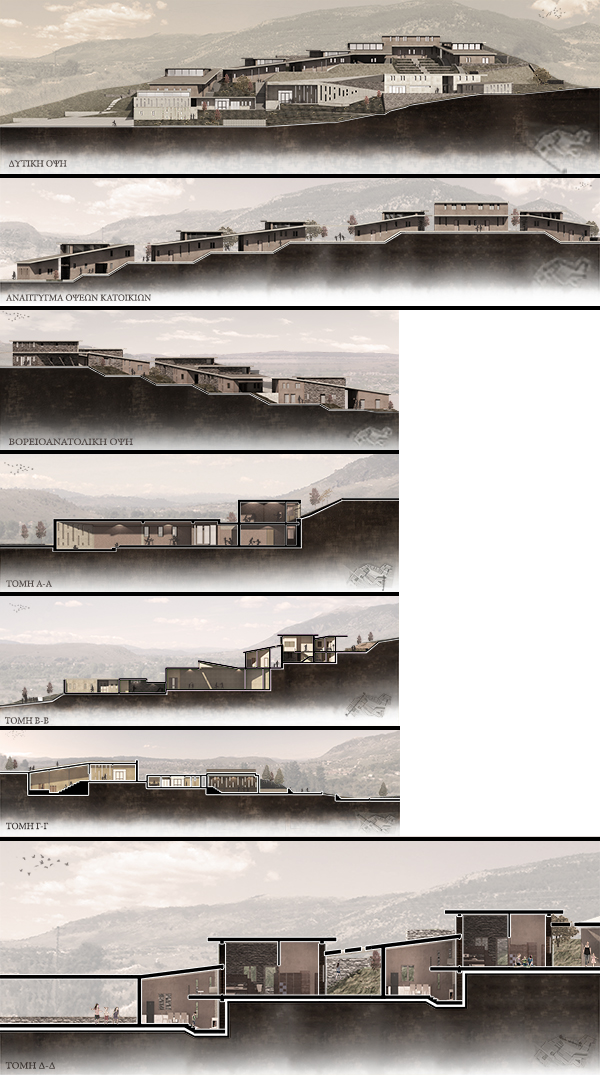
Both basal levels of housing have access to back yards, which are interconnected by ladders. Children have the opportunity of ownership of the site and create personal angles.

